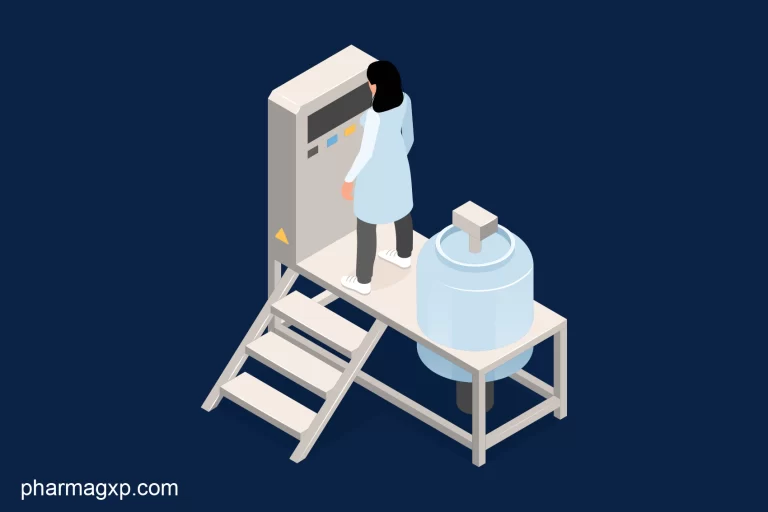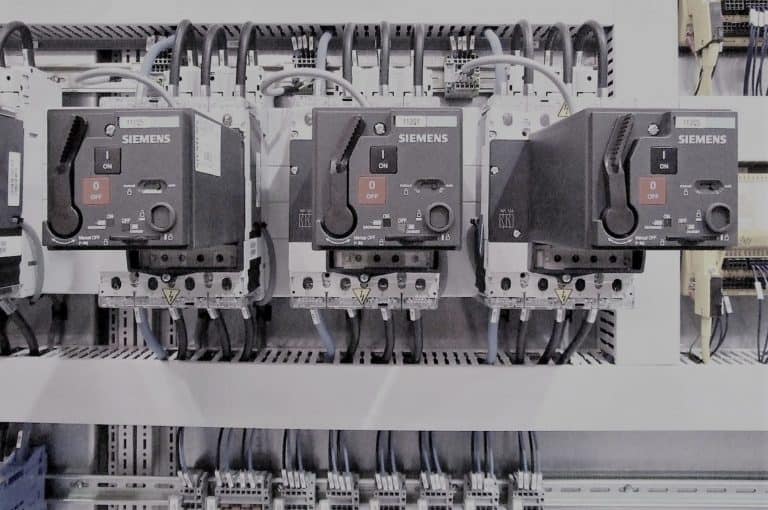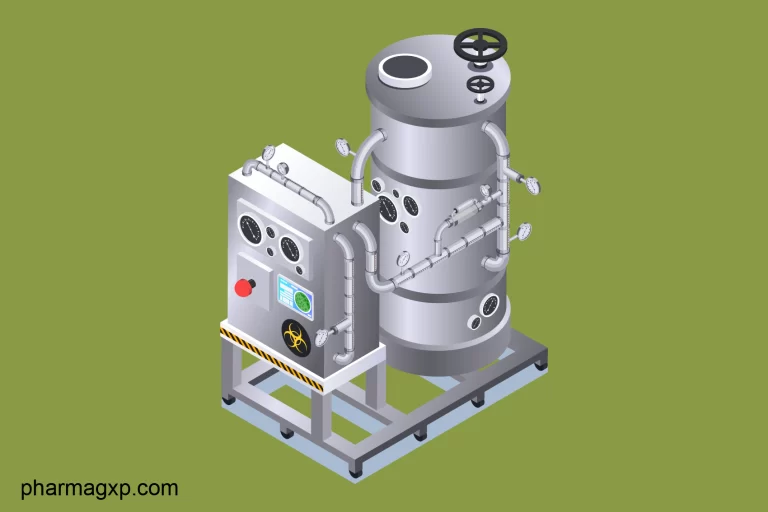Fh Value Calculator Useful in Dry Heat Sterilization

Thermal sterilization isn’t just about applying heat, it’s about precision. And that’s where the Fh Value comes in. This metric helps determine the lethality of a heat treatment in Dry Heat Sterilization (DHS), ensuring consistent sterilization cycles without compromising product integrity.
There are different types of sterilization mechanisms: Steam Sterilization, Dry Heat Sterilization, Ethylene Oxide Sterilization, Depyrogenation, etc.
Choosing the right method of sterilization depends on the material being sterilized and the purpose of sterilization.
Steam sterilization is done under high temperature and high pressure in moist conditions. Hence it takes less time to sterilize.
Whereas, dry heat sterilization is done under high temperature and in dry condition and hence takes more time to sterilize or remove all forms of microorganisms.
Most of these techniques carry their own effectiveness values (explained further).
In the F0 value calculator, we established an exposure equivalency for steam sterilization (compared the ideal and actual exposure times). And thus, the F0 value is called Equivalent Exposure Time.
Here, we’ll talk about the Fh value calculator which is in analogy with the above. But in terms of dry heat, the Fh value is called Heat Penetration Factor.
In this post, you’ll learn:
- How to calculate the Fh value.
- Using Fh value calculator.
- Differences in F0, Fh and Fd values.
- Fundamental comparison of different sterilization techniques.
Though the F0, Fh, Fd values are similar in structure, their application is different.
Simply put:
| Value | Used for Purpose of |
|---|---|
| F0 | Moist Heat Sterilization/Steam Sterilization |
| Fh | Dry Heat Sterilization |
| Fd | Depyrogenation (discussed further…) |
Ideally speaking, sterilization is successful when the product contact parts are free of viable microorganisms.
Now coming to the z-value. Remember? We assumed it as 10°C for the F0 value in steam sterilization when the exact microorganism was unknown.
Similarly, in the Fh concept, the z-value is assumed as 20°C.
When it comes to moisture-sensitive items, steam sterilization is not appropriate and may damage the accessories contacting drug products.
In such cases, Dry Heat Sterilization is the more appropriate option given that the materials withstand higher temperatures than steam sterilization conditions.
Table of Content
Formula For Fh Value
The following formula is used to calculate the Fh value in dry heat sterilization.

Where,
Δt – Sterilization Hold Time in Minutes
T – Average Temperature of all probes during a sterile hold in °C
z – Temperature Coefficient in °C
The term next to Δt in the above equation is lethality rate.
For steam sterilization, the term right to “T” was 121.1°C whereas, in dry heat sterilization, it is 170°C.
The Fh Value Calculator
Difference Between F0 and Fh Value
| F0 Value | Fh Value |
|---|---|
| Evaluates the effectiveness of Steam Sterilization | Evaluates the effectiveness of Dry Heat Sterilization |
| The assumed z-value is 10°C for sterilization range of 100 to 130°C | The assumed z-value is 20°C for sterilization range of 160 to 200°C |
| Theoretical Requirement 121.1°C at 30 min. of sterile hold time | Theoretical Requirement 170°C at 32 min. of sterile hold time |
| Mitigates micro-organisms, especially living endospores | Removes bacterial endotoxins |
| More complicated due to steam quality requirements | The lethality of the microbes is less than that of F0 at the same temperature |
Dry Heat Sterilization
Principle of working
Dry heat sterilization uses conduction as a mode of heat transfer. The heat is absorbed by the outside surface of an item, then passes towards its center. It will eventually reach the temperature required for sterilization.
In other words, the dry heat oxidizes the cell contents and thereby kills the organisms.
A blend of temperature and time is required to kill microorganisms by heat. In general, an increase in temperature will result in a decreased time for bacteria-kill. But, relative to steam sterilization, DHS takes more time to sterilize.
Items that can withstand high temperatures can be sterilized with Dry Heat sterilization like anhydrous (moisture-less).
There are two types of dry heat sterilization:
- Natural Convection
- Forced Convection
A quick comparison of these two.
| Natural Air DHS | Forced Air DHS |
|---|---|
| Oven-type coils transfer the heat from the bottom of the chamber by gravity convection. | Blower-driven system circulating hot air across the chamber at high velocity. |
| More of a traditional setup. | An advanced setup. |
| Requires more time to attain the sterilization set temperatures. | The rate of convection is high due to the use of a blower. Hence achieves the sterilization set temperature in a quick time. |
| Inconsistent temperature distribution inside the chamber. | Uniform temperature distribution across the chamber. |
Application of DHS:
Dry heat sterilization is particularly suitable for materials that can tolerate high temperatures and are damaged by moisture or high pressure.
Since dry heat does not cause corrosion of metal instruments and glassware, it is appropriate for sterilizing them, but it can’t be used to sterilize fabrics, plastics, or rubber.
Lastly, DHS is for materials that must remain dry. For example, glass bottles that contain pharmaceutical powders.
Depyrogenation is Different
There is a difference between Dry Heat Sterilization and Depyrogenation.
The process that removes or inactivates the pyrogens (disables their multiplication) is called depyrogenation.
In aseptic filling, depyrogenation is mainly utilized for sterilizing vials. It can also be used for sterilizing assembled and packaged materials, as heat conduction is not dependent on contact with steam or water.
In the 2nd case, the temperature is even more than DHS and the Fh value is then replaced by the Fd value.
Fd value is a function to measure the effect of the depyrogenation. If we say Fd value to be 2, the effect achieved is equivalent to the exposure of 250°C at 2 mins.
Meaning, as F0 value is for Steam Sterilization, Fd value is for Depyrogenation.
The theoretical requirement for Depyrogenation is 250°C at 30 min. with the z-value assumed as 46.4°C (see the comments). Though this is an ideal condition, a successful depyrogenation would also establish when the system achieves ≥ 3 log reduction.
Whereas, Dry Heat Sterilization occurs at 170°C for 32 min.
Simply put:
| Parameter | Dry Heat Sterilization | Depyrogenation |
|---|---|---|
| Value | Fh value | Fd value |
| Formula difference | T -(minus) 170°C | T-250°C |
| z-Value | z = 20°C | z = 46.4°C |
Conclusion
Sterilization conditions can vary based on bacterial behavior. But the fundamentals? They stay the same. Mastering Fh value calculations ensures your sterilization cycles are effective and reliable.
Whether in process design or routine operations, these values are critical – so don’t overlook them.
You can use this calculator to evaluate probable scenarios in your DHS-related operations once validated.
Now, over to you:
How do you evaluate the Fh value? Using validated software or pre-validated sheets?
Drop a comment below and let’s talk.






Where did you obtain your values for an effective depyrogenation cycle being 30 minutes at 250C to produce a 3-log reduction? I believe that the Z value data that you reference comes from Tsuji and Harrison, and they use a D value for 1 log reduction of 4.99 minutes at 250C. This would mean that a 3-log reduction would be accomplished in 15 minutes at 250C. How did you arrive at a time of 30 minutes for the three-log reduction requirement?
Hi, Mr. Saket Yeotikar
Thanks for this organized article. But after reviewing the comments, I’m not understanding yet the basis for Z value 46.4°C in depyrogenation; 20°C in DHS. Could you share the basis of these preferable Z values and any calculative way to verify these values.
i am also having same question. on what basis 46.4 degree c is considered?
FD values help confirm process consistency because over a period, correlating to endotoxin destruction becomes practically difficult.
Conventionally, the z-value is a rate at which depyrogenation destruction rate (D-value) varies as a function of temperature change. The z-value for dry heat depyrogenation has been shown to be in the range of 45 to 55°C. It depends on the type of micro-organism. Theoretically, the z-value is assumed as 46.4°C.
However, a successful depyrogenation is considered when the system achieves ≥ 3 log reduction.
Hope this helps.
I have a question regarding GMP and the question says
The risks that GMP is designed to reduce are:
(A) In principle mix-ups and cross-contamination.
(B) Wrong labeling of the finished pack only and cross-contamination.
(C) Expected cross-contamination and mix-ups.
(D) Injury or death due to side effects of the drug.
which is the best answer
Without GMP it is impossible to be sure that every unit of a medicine is of the same quality as the units of medicine tested in the laboratory. Making poor quality products does not save money. In the long run, it is more expensive finding mistakes after they have been made than preventing them in the first place. GMP is designed to ensure that mistakes do not occur. Implementation of GMP is an investment in good quality medicines. This will improve the health of the individual patient and the community, as well as benefiting the pharmaceutical industry and health professionals. Making and distributing poor quality medicines leads to loss of credibility for everyone: both public and private health care and the manufacturer. So I would say all of them with highest severity of (D) as it is the probable outcome of (A), (B), and (C) respectively. Hope this answers your question.
Hello Sir,
I have some question.
According to the recently revised EU GMP ANNEX1, it says that a study should be done on the Fh value, does anyone have any experience on how to do this?
8.26 when a thermal process is used as part of the depyrogenation process for any component or prodcut contact equipment/material, validation studies should be performed to demonstrate that the process provides a suitable fh value and results in a minimum 3log reduction in endotoxin concentration.
I am looking to find the time and temperature requirements to destroy the toxin produced by Staphylococcus or similar organisms. These toxins heat resistant but not sure what is the D and z values. Thanks,
Hi Saket, thanks for your great work! I would like to ask you a question about Microbial Validation if you can kindly help me.
I’ve read in the PDA techinical Report No.3 that ” A minimum of ten challenge units should be employed per challenge. “.
So the question is: there are others possibility of microbial tests during a depyrogenation’s validation process? In particular, there are other sources indicating a minimum appropriate number of challenge for challenge?
Thanks a lot, have a nice day!
Davide
Sir, in depyrogenation tunnel, 250 degree for 30 min, Z value is 46.4 for 1 log reduction.
Total temperature required the 294.4 degree for 1 log reduction.
Then why we validate tunnel at 300 degree insted of 294.4 in pharmaceutical applications?
Plz clear my confusion.
Thanks, Anuj for the query. It looks like your presumptions about the depyrogenation validation are based on one case. I urge you to go through this article again and other comments. I am sure it will help you.
Sir, Thanks for your effort,
I Have a question please, I need to know what the minimum value of Fh and Fd to Achieve a successful dry heat sterilization and depyrogenation,
what I realized that the ideal is to achieve Fh 32 min at 170 C and Fd 30 min at 250 C, what if I change the temperature how could I Calculate the required time to achieve a successful Process?
Once I was doing a validation for an oven in one of the companies, they set the Oven at 185 C for 2 hrs. and they considered this run as depyrogenation study and the result of Fd was 4.78 is this is failed run?
As an example, should I increase the time to achieve a 30 min of Fd to be success with taking in consideration increasing time to prove my understanding of doing a success depyrogenation run?
Thank you.
Hi Ahmed.
Fd value is a function to measure the effect of the depyrogenation. If we say Fd value to be 2, the effect achieved is equivalent to the exposure of 250°C at 2 mins.
Meaning, as F0 value is for Steam Sterilization, Fd value is for Depyrogenation.
The theoretical requirement for Depyrogenation is 250°C at 30 min. with the z-value assumed as 46.4°C (see the comments). Though this is an ideal condition, a successful depyrogenation would also establish when the system achieves ≥ 3 log reduction.
Whereas Dry Heat Sterilization occurs at 170°C for 32 min.
Dear Sir,
Role of D value in FH calculation in Depyrogenation tunnel and Dry heat Sterilizer temperature validation where in both cases I am using endotoxin as a challenge?
I am using Kaye Validator for calculation of FH value During exposure time:
For DHS,
Base Temperature is 250 C. Dwell time is 30 Min. D value I put 4.99 Min.
Acceptance criteria is FH not less than 30 Min.
But, I am not getting required FH value.
Sir, where is the problem I am not able to find it.
For Depyrogenation Tunnel,
Base Temp is 250 C. Dwell time is 3 Min. D value is 4.99 min.
Here also not getting required Fh value? Where is the problem?
One more thing. In both cases I put Z value as 46.4 C and getting the required temperature i.e in case of DHS temperature is greater than 250 C and for depyrogenan tunnel greater than 300 C.
Sir, Please reply.
Hi Salim, thanks for the comment.
Seems confusing, can you please share your entire calculations and assumptions over [email protected]?
I will review and let you know the results.
Dear Sir,
I have depyrogenation tunnel running on 330 degree Celsius. Dwell time is approximately 8 minutes. What should be z value for it?
FD values help confirm process consistency because over a period, correlating to endotoxin destruction becomes practically difficult.
Conventionally, the z-value is a rate at which depyrogenation destruction rate (D-value) varies as a function of temperature change. The z-value for dry heat depyrogenation has been shown to be in the range of 45 to 55°C. It depends on the type of micro-organism. Theoretically, the z-value is assumed as 46.4°C.
However, a successful depyrogenation is considered when the system achieves ≥ 3 log reduction.
Hope this helps.
Hello Sir! What will be the depyrogenation time for a tunnel operating at 335 deg.C?
Good morning Saket!
First of all, thank you for your clear and insightful article!
I have a question about a “reverse problem”.
We operate depyrogenation of glass vials in a tunnel at 350° C. As we want to decrease the cycle time, may I estimate the minimum cycle time by using the Fd equation?
I tried with the following set:
Tref=250 C
Ttunnel =320 C (lowest stable recorded temperature)
z=46,4°C
and I obtained a delta t=0,93 min.
Of couse this could not be the cycle time since there the heating time (from 20C to 320C must be taken into account. But if for example heating time is 2 min, it is correct and safe to affirm that an Fd=30 min is reached in 3 minutes? I suppose that it could be greater since in the heating phase when T tunnel >250 accumulation of Fd starts.
Thank you!
Thanks, Elisa for your comment. Yes, you can decrease the depyrogenation cycle time. You may increase the temperature and achieve the defined Fd value for 3 to 6-log reduction as appropriate. And also, if your depyrogenation system is fully automated, you can take into account, the lethal doses from heating phase itself keeping your Fd value as set point along with the temperature (hold time becomes null and void here). Either way, the main purpose of the depyrogenation should not be compromised. Hope you are getting my point. Don’t hesitate to reply if you need anything more.
Sir, please tell me how to calculate sterilization hold time of depyrogenation tunnel…
Thanks, Sushant for your query. I quote from the above article, “The theoretical requirement for Depyrogenation is 250°C at 30 min. with the z-value assumed as 46.4°C (see the comments). Though this is an ideal condition, a successful depyrogenation would also establish when the system achieves ≥ 3 log reduction.”
Hello sir, great explaination
I have few questions,
1) How do we identify the z value for a depyrogenation process?
2) What is the mininum FD to consider as complete depyrogenation?
Thank you
Thanks, Lauv. Though this article is mainly related to Dry Heat Sterilization, you will find some information regarding Depyrogenation process.
1) A typical depyrogenation process shall range between 170°C to 300°C for 1 hour or 2 hours. It depends. The z-value is different for different microbes. But theoretically, we assume the z-value for depyrogenation as 46.4°C
2) A successful depyrogenation is considered when the system achieves ≥ 3 log reduction.
Hope you find the information useful!
Hello Saket,
Thank you for an interesting practical article.I am hoping you can help me with a Dry Heat Sterilization question. An overkill DH Steri process was validated at 150C at 4 hours (half cycle). Someone changed the cycle to 130C at 6 hours (half Cycle). I have been away from these calculations for a long time- I know I should be able to show equivalency of the two temp/time combinations to show we still have a 6 log reduction for the half cycle. Can you help?
Glad you find the article helpful, Barbara! Surely I can assist. Let me summarize the findings for you here.
1st Case: 150°C for 4 hours (240 minutes) — Fh value = 24 mins. __ Validated
2nd Case: 130°C for 6 hours (360 minutes) — Fh value = 4 mins. ___ Not-validated
Ideal Case: 170°C for 32 minutes — Fh value = 32 mins.___ Ideal
The difference is clearly visible. 130°C for 6 hours doesn’t seem to be working for you.
I recommend you in this case:
1) Resume your half cycle to 150°C for 4 hours which was already validated. OR
2) Go with the ideal case mentioned above. OR
3) Try to validate it for 130°C for 6 hours (I don’t feel it will help).
Also, investigate –
1) Why the cycle parameters changed and on what assumptions?
2) Impact on the product quality for already processed batches under 130°C at 6 hours cycles.
3) Document the deviation and conclude your CAPA accordingly.
Hi Saket,
Your answer confirmed my results and I was hoping I was wrong!
The cycle is in the process of being validated at the 130°C for 6 hours. I am keeping my fingers crossed that it passes the Microbiological PQ.
The people changed it do not understand micro or sterilization and I was brought in to help fix the problem.
Thank you again for your response.
We are in similar situation. We make color cosmetic powder and we need to lower our bioburden however our product has heat stabilty of 140 C. We ran 115C for 6 hours and it didnt work in removing TAMC, Gram+ and Gram- so we wanted to try 130 for 6 hours. Any thoughts on the feability of if it will work?
Theoretical Requirement: 170°C at 32 min. of sterile hold time.
Can you show me to the documentation about this?
Dear Saket,
thank you for this valueable article for the newbies in the field.
I’d like to etent Susu’s question for the reference to the Theoretical requirements also for steam sterilization and depyrogenation.
The (base) temperatures are not in line with E.P 5.1.1.
We also need to clarify that the recommended durations are for the full cycle and not only for the sterile/depyrogenation hold time, else the would exceed regulatory requirements by far.
Thanks in advance for your clarification!
Best regards,
Robert
How to find FH value at 180 degree celsius and having hold time 1 hour. And what will be the z value for that??
Hello, Vikrant. This article exactly deals with your 1st question. I would urge you to use the above calculator to find out what you are looking for. Regarding your 2nd point, the z-value for dry heat sterilization depends on the type of micro-organism you are dealing with. But in general, it is considered as 20°C (including this calculator) because of the type of BI used for evaluation. Refer to other comments for better clarity.
Sir,
Please tell that, why we consider 20°C as Z value in dry heat sterilization (Fh) while in depyrogenation 46.4°C?
Hi Nirbhay! Mathematically, the z-value is the reciprocal of the slope of the straight line obtained on a semi-log graph paper for at least 3 different D-values for a typical Biological Indicator (BI). The graph is plotted as D-value vs Temperature.
For Dry Heat, we generally consider bacillus subtilis (ATCC 9372 or CIP 77.18) where the D-value ranges from 5 to 10 mins. Doing so, you’ll get these values approx. Hope that helps.
When calculating with a different program, two values were obtained: Fh=13.78(min) and Fh=0.07(min).
0.07(min) could be obtained in the same way as your writing, but I have no idea how 13.78 is calculated. Do you happen to be able to seek advice?
Hi Jeon, I think it’d be great if you could share more details on this.
Parameters:
Z = 10
Tref.°C = 121°C.
The duration is 25 minutes and the average temperature is 119.41°C.
The resulting values were Fh=13.37 and Fh=0.07(min). Please let me know if you need any more information.
Hmmm. I see your parameters resonate with steam sterilization as z=10 and Avg. Temperature is 119.41°C at 25 mins. This particular page discusses dry heat sterilization where the Z-value is assumed as 20°C. So, first of all, you should use the F0 value calculator.
Now, coming back to your values and considering steam sterilization, the F0 value for this scenario would be around 17 mins.
Let me know if this helps.
Oh, I understand. Thank you.
But when you experiment with steam sterilization at 121°C,
Can’t I get the Value of Fh?
‘Fh’= Is it a Dry Heat Sterilization?
See, you can’t mix them up because their purpose is different. Please read the differences laid down on this page earlier.
Sir plz tell me the Z value for 220°C at 90 min. in DHS.
Thanks, Naresh for your query. Actually, it differs for different micro-organisms. But, when we don’t know exact details, we can consider the z-value as 20°C since you mentioned DHS at 220°C. If you’d have said moist-heat sterilization (steam sterilization), we then should consider the z-value as 10°C when we don’t know exact microbe details to deal with.
Or if you want to determine the z-value for a particular microorganism, follow this:
1. Determine the D-value of an organism at min. 3 to 4 different temperatures.
2. Construct a death curve by plotting the log D vs. temperature.
I hope this clarifies. Please do not hesitate to ask for any additional information and I would be more than happy to respond.